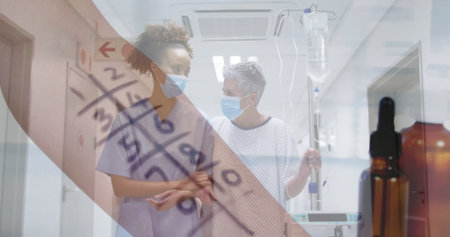Understanding the Diversity of the UK’s Aesthetic Clientele
The United Kingdom is renowned for its rich multicultural landscape, shaped by generations of migration and global influence. This cultural tapestry is vividly reflected in the clientele of modern aesthetic clinics, where practitioners encounter individuals from a wide range of ethnic, linguistic, and cultural backgrounds. As the demand for aesthetic treatments continues to grow across different communities, it becomes increasingly essential for clinics to appreciate and adapt to this diversity. Expectations regarding beauty standards, communication styles, and even perceptions of cosmetic procedures can vary significantly between cultural groups. For example, while some clients may prefer subtle enhancements aligned with British aesthetics, others might seek more pronounced results influenced by their heritage or global trends. Additionally, language differences can pose significant challenges in accurately conveying treatment options, risks, and aftercare instructions. Therefore, understanding the multicultural nature of the UK’s population is not only vital for fostering trust but also for delivering safe and satisfactory outcomes. By embracing cultural sensitivity and tailoring communication strategies, aesthetic practitioners can ensure that every client feels respected, understood, and confident in their care.
Identifying Common Language and Cultural Barriers
When delivering aesthetic treatments in the UK, both practitioners and clients encounter a range of language and cultural obstacles that can affect the overall clinic experience. A clear understanding of these barriers is vital for fostering trust, ensuring accurate communication, and achieving desirable outcomes.
Language Barriers in the Clinic Setting
The UK’s diverse population means that English may not always be the first language for every client. Misunderstandings can easily arise due to limited vocabulary, unfamiliar medical terminology, or different accents. This can lead to confusion regarding treatment options, consent forms, post-procedure care instructions, and even clinic policies. Practitioners must be aware of these potential gaps to prevent miscommunication that might compromise safety or satisfaction.
| Language Barrier | Potential Impact on Client Care |
|---|---|
| Lack of fluency in English | Misinterpretation of procedures, risks, or aftercare instructions |
| Medical jargon unfamiliarity | Anxiety or reluctance to ask questions; incomplete understanding of treatment plans |
| Accents or dialects differences | Difficulty in following explanations or expressing personal expectations |
Cultural Attitudes Towards Beauty and Clinical Care
Cultural perspectives significantly influence how individuals perceive beauty, ageing, and medical interventions. For example, what is considered aesthetically pleasing or desirable in one culture may differ greatly from another. Additionally, attitudes towards clinical environments—such as comfort with physical touch during consultations or preferences for privacy—vary widely among different backgrounds.
Common Cultural Differences Encountered:
- Beauty Standards: Some cultures may value subtle enhancements while others prefer more noticeable results.
- Attitudes Toward Ageing: There are varying degrees of acceptance and openness regarding anti-ageing treatments.
- Sensitivity to Procedures: Religious beliefs or personal values may influence comfort with certain procedures.
- Communication Styles: Directness versus indirectness in discussing concerns or dissatisfaction with outcomes.
Navigating These Barriers Effectively
By proactively identifying where communication gaps and cultural misunderstandings are likely to occur, practitioners can tailor their approach. This involves using plain English, visual aids, culturally sensitive questionnaires, and inviting open dialogue to ensure every client feels understood and respected throughout their aesthetic journey.

3. Effective Communication Strategies
Clear and effective communication is paramount when overcoming language and cultural barriers in the aesthetic clinic. Best practices begin with the consistent use of plain English, ensuring that all information regarding procedures, risks, and aftercare is accessible and easily understood by patients from diverse backgrounds. Avoiding medical jargon and complex terminology not only reduces confusion but also fosters trust between practitioner and patient.
In instances where language remains a significant obstacle, enlisting professional interpreters is highly recommended. While family members may offer assistance, trained interpreters ensure accuracy, maintain confidentiality, and help prevent miscommunication—critical in clinical settings where consent and safety are paramount. Furthermore, interpreting services familiar with UK healthcare standards are best positioned to bridge linguistic gaps effectively.
Culturally appropriate communication techniques should also be integrated into every patient interaction. This involves recognising non-verbal cues, adapting consultation styles to respect cultural sensitivities, and being mindful of differing beliefs about aesthetics and beauty. For example, some cultures may prefer more formal greetings or require additional privacy during consultations. Practitioners should demonstrate empathy, patience, and active listening skills to build rapport and ensure that each patient feels valued and understood throughout their aesthetic journey.
4. Adapting Clinical Procedures and Documentation
Ensuring that clinical procedures and documentation are accessible to clients from diverse linguistic and cultural backgrounds is crucial in a UK-based aesthetic clinic. Modifying consent forms, aftercare instructions, and procedural explanations not only upholds ethical standards but also fosters trust and transparency. Here are some guidelines for adapting these essential documents:
Consent Forms: Clarity and Accessibility
Consent forms should be written in plain English, avoiding medical jargon whenever possible. For clients whose first language is not English, providing translated versions or access to professional interpreters is vital. Use culturally sensitive language and ensure that all potential risks, benefits, and alternatives are clearly explained.
| Document Section | Standard Approach | Adapted Approach |
|---|---|---|
| Patient Details | Name, DOB, Address (English only) | Include phonetic spelling; provide space for preferred names or pronouns |
| Procedure Description | Medical terminology | Simplified language with diagrams if needed; translated summaries available |
| Risks & Benefits | List format in English | Bilingual bullet points; offer verbal explanation with interpreter support |
| Signature & Date | English instructions only | Multilingual prompts; space for interpreter’s details if present |
Aftercare Instructions: Ensuring Compliance Across Cultures
Post-procedure care is critical to optimal outcomes. To address language and cultural barriers, provide written aftercare instructions in the client’s preferred language where possible. Consider cultural practices that may influence compliance—for example, skincare routines, dietary restrictions, or beliefs about healing.
- Simplify steps: Use numbered lists and visual aids.
- Cultural adaptation: Be aware of traditional remedies or practices that may conflict with medical advice.
- Contact information: Clearly display how to reach the clinic for follow-up queries, offering multilingual support if feasible.
Procedural Explanations: Building Understanding and Confidence
Adequate explanation of procedures helps reduce anxiety and supports informed decision-making. Allocate extra time during consultations with clients who require interpretation services. Encourage questions and confirm understanding by asking clients to summarise key points (“teach-back” method).
Checklist for Effective Communication During Procedures:
- Use clear, step-by-step verbal explanations supported by written materials.
- Utilise professional interpreters rather than relying on friends or family members.
- Acknowledge and respect any cultural beliefs about appearance or medical interventions.
- Record the language used and any additional support provided in the patient’s records.
Conclusion: Fostering Inclusivity Through Adaptation
The careful adaptation of clinical procedures and documentation demonstrates a commitment to inclusivity within UK aesthetic clinics. By prioritising clarity, accessibility, and cultural sensitivity throughout every stage—from consent to aftercare—clinics can deliver safe, effective care tailored to the needs of an increasingly diverse clientele.
5. Training and Staff Development
In the dynamic environment of an aesthetic clinic, providing exceptional patient care extends well beyond clinical expertise; it also requires a deep understanding of cultural nuances and effective communication skills. Ongoing training in both language proficiency and cultural competency is vital for all staff members to ensure that patients from diverse backgrounds feel welcomed, respected, and understood throughout their aesthetic journey.
Continuous professional development programmes should be implemented as standard practice within clinics. This includes regular workshops on British etiquette, as well as sensitivity training that addresses local customs and common misconceptions about various cultures represented in the UK. Such initiatives empower staff to recognise subtle differences in patient expectations and beliefs, ultimately improving rapport and trust.
Language training is equally crucial. Even when English is the common language, nuances in accent, idioms, and colloquialisms can lead to misunderstandings. Staff should be equipped with tools to communicate clearly and empathetically with both native speakers and those for whom English is a second language. Consideration should also be given to providing translated materials or access to professional interpreters when needed.
Furthermore, fostering an environment where team members feel comfortable discussing cultural or language challenges encourages collaborative problem-solving. Regular team meetings can serve as forums for sharing experiences, learning from one another, and identifying additional training needs.
By investing in ongoing training and staff development, aesthetic clinics not only uphold high standards of care but also demonstrate genuine commitment to inclusivity—a value that resonates strongly within the UK’s multicultural society.
6. Building Trust and Long-term Relationships
Establishing trust is the cornerstone of any successful aesthetic clinic, particularly when working with clients from diverse linguistic and cultural backgrounds. A commitment to sensitivity, respect, and ongoing engagement not only enhances patient satisfaction but also encourages long-term loyalty and positive word-of-mouth within varied communities.
Fostering an Inclusive Environment
Creating an inclusive atmosphere begins with recognising and valuing each client’s unique background. Simple gestures, such as using culturally appropriate greetings or demonstrating awareness of different communication styles, can make clients feel acknowledged and respected from their first interaction. Staff training in cultural competence further ensures that every team member contributes to a welcoming environment for all patients.
Transparent Communication
Clear, jargon-free explanations of procedures, risks, and aftercare are essential for building trust, especially when language barriers exist. Providing translated materials or access to professional interpreters where necessary demonstrates a genuine commitment to patient understanding and safety. Transparent communication reassures clients that their wellbeing is the clinic’s top priority.
Continuous Engagement Beyond the Clinic Visit
Maintaining relationships does not end when the patient leaves the clinic. Regular follow-up calls or messages—tailored to the client’s preferred language and platform—show ongoing care and attentiveness. Sharing educational content relevant to various cultures through newsletters or social media can help keep clients informed and engaged while reflecting the clinic’s dedication to diversity.
Respectful Feedback and Improvement
Inviting feedback in a manner sensitive to cultural norms encourages honest dialogue about the patient experience. Acting on this feedback not only improves services but also signals that every voice matters, further strengthening trust between clients and practitioners.
By prioritising sensitivity, respect, and consistent communication, aesthetic clinics in the UK can successfully overcome language and cultural barriers—building lasting relationships that support both patient satisfaction and business growth within a multicultural society.


